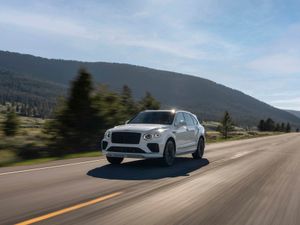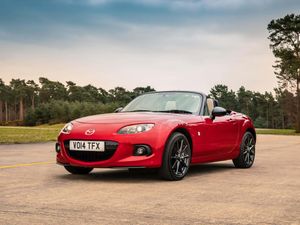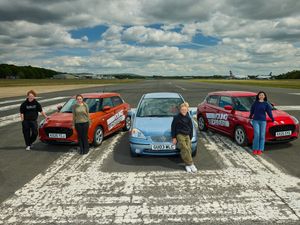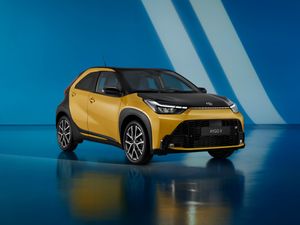Pushing endurance to the limit
Shropshire journalist Neil Perkins has just completed his 10th Dakar Rally, following drivers thousands of miles across some of the most inhospitable terrain in the world. It all started in the flamboyant city of Buenos Aires...
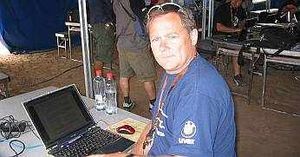
 Shropshire journalist Neil Perkins has just completed his 10th Dakar Rally, following drivers thousands of miles across some of the most inhospitable terrain in the world. It all started in the flamboyant city of Buenos Aires...
Shropshire journalist Neil Perkins has just completed his 10th Dakar Rally, following drivers thousands of miles across some of the most inhospitable terrain in the world. It all started in the flamboyant city of Buenos Aires...
The Dakar Rally: 3,100 miles of competitive special stages in a route of 6,000 miles across some of the most inhospitable terrain in the world.
The planet's greatest off-road race claims lives almost every year, but continues to capture the public's imagination.
Devised by the late Frenchman Thierry Sabine, the Dakar crossed the African continent for 29 of its 31 years, but a terrorist threat in 2008 forced the French organisers, the ASO (who also run the Tour de France), to cancel the event and move the rally to South America this year.
Newport-based journalist Neil Perkins has just completed his 10th Dakar Rally and his ninth successive event. The switch to South America was an unknown for everyone, but surpassed all expectations and Perkins was impressed with the logistical expertise of the ASO and the friendly welcome that the event received in Argentina and Chile.
Negative press comment failed to prevent this year's Dakar from attracting 531 entries, including former WRC champions, Carlos Sainz and Miki Biasion, top rally drivers Alister McRae, Nasser Al-Attiyah and Dieter Depping, ex-Formula One racing stars Eliseo Salazar, Ukyo Katayama and Paulo Barilla, Nascar racer Robbie Gordon and WTCC champion Yvan Muller.
The flamboyant city of Buenos Aires was chosen to host the start on January 2 and an estimated 750,000 people lined the streets of the city to flag off the heroes, as five local television networks offered blanket coverage of the start and French TV and Eurosport beamed images back to Europe and on to the rest of the world.
Journalists covering the Dakar have two options: take a car with up to three other people, register it with the ASO, make sure it is fitted with full safety and navigational equipment and prepare for long, tiring days and even longer nights. Or take the expensive option and cover the event in a small 'plane.
Perkins, who has worked for Nissan, Peugeot, the ASO and Mitsubishi in the past on the event, was fortunate to be working for both the Mitsubishi and BMW teams this time and travelled with the team management of both operations in a small twin-prop Embraer aircraft manned by four Uruguayan air crew from Montevideo.
 The comforts of a luxury hotel in Buenos Aires were soon forgotten once the Dakar headed south towards the Patagonian wastelands and the first three legs to the towns of Santa Rosa de la Pampa, Puerta Madryn and Ingeniero Jacobacci. It was life in a tent in the dust from now on.
The comforts of a luxury hotel in Buenos Aires were soon forgotten once the Dakar headed south towards the Patagonian wastelands and the first three legs to the towns of Santa Rosa de la Pampa, Puerta Madryn and Ingeniero Jacobacci. It was life in a tent in the dust from now on.
From the racing side, BMW and Volkswagen shared the early lead, but Mitsubishi's Hiroshi Asuoka was sidelined with engine problems, French rider Pascal Terry died in Santa Rosa and a British crew were seriously injured in a crash. The Dakar was living up to its reputation.
Media and press representatives spent two nights on a bus crossing Patagonia and beginning the northerly trek towards Mendoza and the last stage in Argentina before the passage into Chile.
BMW's lead car had been sidelined and Mitsubishi had withdrawn a second car through co-driver illness before the event reached Mendoza. Many teams had spent up to two nights stranded in a series of sand dunes under the Andes foothills. It was far more difficult than many had anticipated and was going to get even tougher.
Thousands of people had lined roads, bridges and link roads in Argentina and the entry into Chile and the arrival at the naval base in Valparaiso was no exception. The spirit of the Dakar had been captured by the South American people: it was a far cry from the sullen faces and devious tactics often shown by resourceful Africans on Dakars gone day.
Volkswagen took control of the Dakar as it reached the Atacama desert - the highest and driest in the world - where morning fog off the Pacific Ocean delayed several special stages around La Serena and Copiapo. Mitsubishi lost the third of its four cars, as Volkswagen headed towards a first win on the Dakar since 1980 and BMW jostled with Nissan for positions in the lower reaches of the top 10.
The event then headed back across the Andes mountains. The rally began its passage through the Argentinean grasslands on the final week, taking in Fiambala and La Rioja, before arriving in Cordoba and crossing much of the terrain used by the FIA World Rally Championship. All the survivors received a hero's welcome in Buenos Aires and the masses turned up again to see the ceremonial finish.
Co-driver Quin Evans, from Pateley Bridge in the Yorkshire Dales, is the unlikely British hero of the 2009 Dakar Rally.
Evans partnered the Norwegian driver Ivar Erik Tollefsen and, after 14 gruelling special stages and over 5,000km of competition he finished a superb fourth overall.
The 35-year-old has been working with the Norwegian for three years and the entry into the Dakar has been the pinnacle of the Yorkshireman's achievements to date. "It was a superb result for us," he said.
Perkins had just two hours to finish off all the releases before dashing off to the airport to catch the long-haul Lufthansa flight back to reality and a night at home before heading off to Qatar - another far-more hospitable desert and the luxury of a clean, dust-free hotel.

